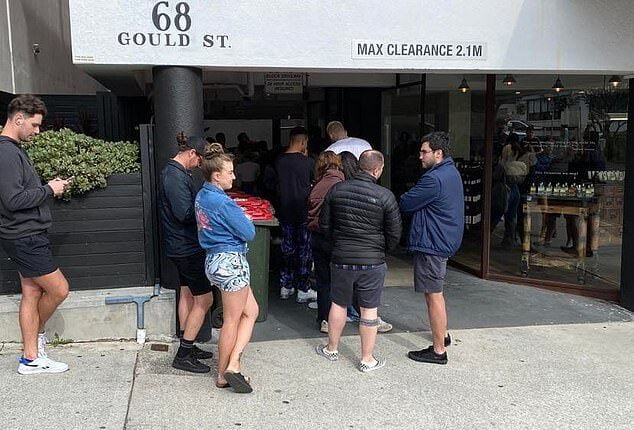Australia’s ninth straight interest rise is slamming renters as landlords pass on their mortgage rate hikes.
And according to experts, rents will continue to rise in the coming months.
Compare the Market’s Phil Portman said these huge increases are having an impact on people who are already doing it tough, while some economists say Australia’s rental crisis is self-inflicted by very high levels of migration.
The average national monthly increase was $161 in the last 12 months, but there is a wide variation from state to state.
At $180, West Australians have seen the biggest average monthly increase, followed by Queensland, $177, Victoria, $169, SA, $158 and NSW, $142.

The shocking reality of Sydney’s rental crisis: The queue to inspect a ‘tiny’ studio stretches onto the street like a nightclub line – with nearly 100 people turning up
‘From insurance premium price hikes, rising grocery bills and exploding energy prices, the last thing Aussies need is for their rent to increase,’ said Mr Portman.
‘Unfortunately, that’s what we’re seeing, putting more households under further financial pressure.’
Year on year, WA renters are paying $2,160 more, Queenslanders are paying $2,124 more, Victorians $2,028, and NSW renters are paying $1,704 extra.
With the Reserve Bank of Australia raising the cash rate from 0.1 per cent last April to 3.35 per cent today, mortgage repayments have increased dramatically, and 53.9 per cent of renters have seen their monthly rent increase over the last 12 months.
Mr Portman said that ‘Over a year, it’s enough to pay for a return trip overseas, fill up a 50-litre tank car around 22 times or potentially pay for more than a year’s worth of electricity.’
He said with homeowners having got nine consecutive rate rises: ‘many landlords are passing these costs onto their tenants, which is why we’re seeing rental prices soar around the country.
‘As long as those rates continue to rise, it’s fair to say that renters could continue to feel the brunt in the coming months.’
It’s not just rate rises that has led to rental increases – there is increased demand too, especially since borders have reopened and international students have returned.
According to economist Leith van Onselen, Australia’s rental crisis is self-inflicted by very high levels of migration.
The post-Covid migrant intake is going from 35,000 to 195,000 – way up from the long term trend has been 100,000.
The University of NSW City Futures Research Centre, found that Australia’s social housing stock grew by 9 per cent in the 14 years to 2020, but the immigration-driven population growth was 25 per cent in the same period.
The massive rent increases are also affecting people’s saving, with Compare the Market’s findings showing 27.1 per cent of Australians haven’t been able to save anything, 36.8 per cent haven’t been able to save as much as they usually would and 12.1 per cent have seen their savings go backwards.
‘We don’t want to see Australians dipping into their savings to cover daily expenses like rent,’ Mr Portman said.
‘Ensure you’re able to afford any rental increases before you sign away on the dotted line. Like we saw in 2022, we are expecting further financial stress in 2023.’
Mr Van Onselen said if politicians really want to fix Australia’s housing crisis, they must start by curbing migration growth so that demand better matches supply.
‘Otherwise, Australia’s rental crisis will become a permanent feature of Australia,’ he said.









